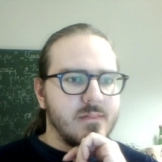Perturbative Methods in Gravity Theory
A special issue of Universe (ISSN 2218-1997). This special issue belongs to the section "Gravitation".
Deadline for manuscript submissions: closed (31 January 2022) | Viewed by 2335
Special Issue Editor
Interests: geometry in physics; multi-metric gravity; area metric gravity; Finsler gravity; Cartan geometry; quantum manifolds; category theory
Special Issue Information
Dear Colleagues,
The theory of small perturbations around a given exact background solution, with the aim of constructing approximate solutions by a perturbative expansion of a set of field equations, is one of the most important tools employed in the study of gravity theories. In the most simple case, the background solution is assumed to be maximally symmetric, such as Minkowski spacetime, leading to the well-known Newtonian and post-Newtonian approximations, as well as the description of gravitational waves. Relaxing the symmetry to only spatial homogeneity and isotropy leads to the theory of cosmological perturbations, which is the most important framework for assessing the viability of cosmological models using precision observations such as the angular spectrum of the cosmic microwave background. Another application, which has gained a significant amount of importance with the possibility of observing gravitational waves, is the perturbation of black hole spacetimes, which is used to model the gravitational waves emitted during the inspiral and ringdown phases of a merger event.
The aim of this Special Issue is to focus on the development of perturbative methods and their application in the field of gravity theory, including, but not limited to:
- the role of gauge invariance and its use in gauge-invariant formalisms;
- parametrized frameworks, such as the parametrized post-Newtonian formalism, and the further development of such frameworks in other areas of gravity theory;
- the study of modified gravity theories and extensions of general relativity using perturbation theory;
- observations in gravity and the measurement of perturbative quantities;
- perturbations beyond the metric paradigm and alternative geometric descriptions of spacetime; and
- tools for performing analytical and numerical calculations of perturbations in gravity theory.
Dr. Manuel Hohmann
Guest Editor
Manuscript Submission Information
Manuscripts should be submitted online at www.mdpi.com by registering and logging in to this website. Once you are registered, click here to go to the submission form. Manuscripts can be submitted until the deadline. All submissions that pass pre-check are peer-reviewed. Accepted papers will be published continuously in the journal (as soon as accepted) and will be listed together on the special issue website. Research articles, review articles as well as short communications are invited. For planned papers, a title and short abstract (about 100 words) can be sent to the Editorial Office for announcement on this website.
Submitted manuscripts should not have been published previously, nor be under consideration for publication elsewhere (except conference proceedings papers). All manuscripts are thoroughly refereed through a single-blind peer-review process. A guide for authors and other relevant information for submission of manuscripts is available on the Instructions for Authors page. Universe is an international peer-reviewed open access monthly journal published by MDPI.
Please visit the Instructions for Authors page before submitting a manuscript. Submitted papers should be well formatted and use good English. Authors may use MDPI's English editing service prior to publication or during author revisions.
Keywords
- perturbation theory
- general relativity
- modified gravity
- approximate solutions
- parametrized formalisms





